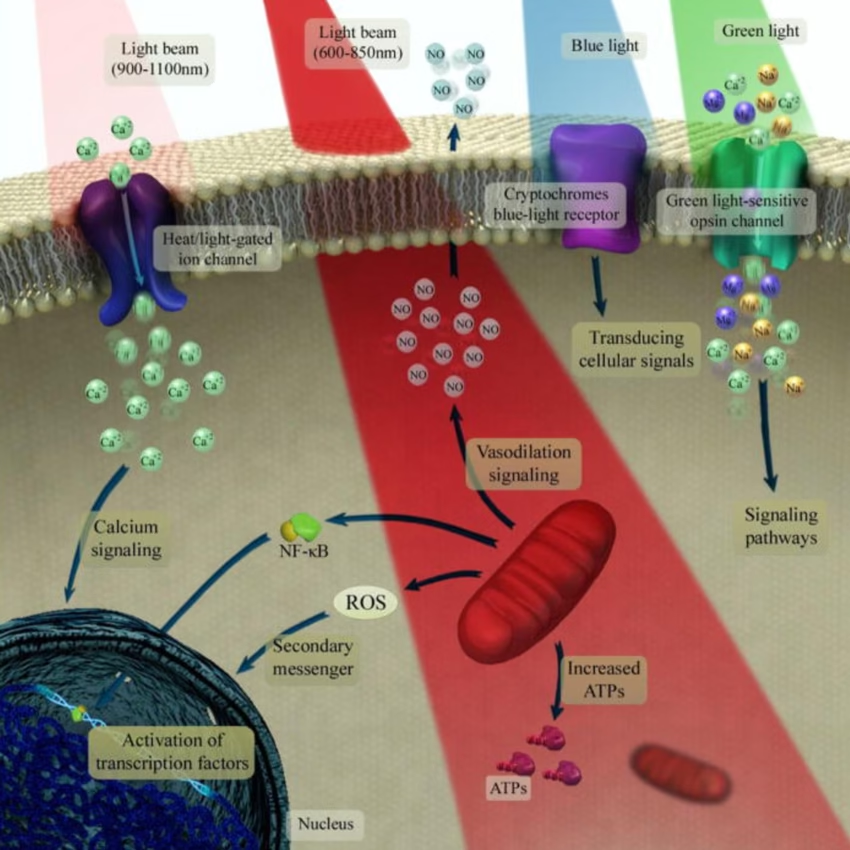How Red Light Supports Brain Healing—From the Inside Out
At RegenClinic, we’ve always believed that healing should be gentle, evidence-informed, and in harmony with the body’s own ability to recover. One of the most promising therapies we offer is photobiomodulation—also known as red light therapy.
You may already know that red light can support muscle recovery and reduce inflammation. But did you know it can also help support the brain?
A 2018 review published in Molecular Neurobiology by Dr. Michael Hamblin—of Harvard Medical School and MIT—summarizes a wide body of research exploring how red light therapy affects the brain. The results are both fascinating and hopeful.A 2024 study published in Medical Science Monitor has added exciting new insight into how red light therapy may help slow the onset and progression of myopia (nearsightedness)—especially in children and young adults.

What Is Brain Photobiomodulation?
Photobiomodulation (PBM) uses specific wavelengths of red and near-infrared light (typically 660–810 nm) to stimulate the energy centers inside your cells—the mitochondria.
When applied to the head using a transcranial helmet or other delivery method, PBM can reach brain tissue and:
- Boost ATP production, which supports energy metabolism
- Improve oxygen flow and circulation
- Reduce oxidative stress and inflammation
- Trigger the release of neuroprotective proteins
- Stimulate neurogenesis (the creation of new brain cells)
In short, it helps the brain function better, repair faster, and build new connections.
What Conditions Might Benefit?
The 2018 review analyzed dozens of clinical and preclinical studies. Researchers found that PBM therapy may be helpful for:
- Traumatic brain injury (TBI)
- Parkinson’s disease
- Stroke recovery
- Alzheimer’s and other dementias
- Depression and anxiety
- Sleep disorders
- Cognitive decline and brain fog
- Post-concussion symptoms
- PTSD and mood dysregulation
In many of these studies, patients experienced measurable improvements in memory, attention, executive function, mood, and overall quality of life.
How Does Red Light Reach the Brain?
One challenge in treating brain conditions is getting therapy past the blood–brain barrier—but light offers a non-invasive alternative. While some red light is absorbed by the scalp and skull, enough penetrates to affect deeper tissues, especially when delivered via a helmet like the one we use at RegenClinic.
Researchers are also exploring other innovative methods, such as intranasal light therapy and oral light delivery, to target key areas at the base of the brain more directly.
What Makes This Safe?
Across all studies reviewed, no serious side effects were reported. In fact, photobiomodulation is increasingly seen as a low-risk, high-reward therapy for patients who are seeking natural, non-pharmaceutical ways to support their health.
At RegenClinic, we use THOR laser technology—the same system trusted by leading research institutions and hospitals worldwide. Our treatments are backed by the latest clinical research, and always delivered with care and compassion.
Red Light Therapy Is Complementary, Not Competitive
If you’re already working with neurologists, psychologists, or other care providers, red light therapy can enhance—not replace—their care. Many of our patients use RLT alongside medication, physical therapy, naturopathic support, and counseling.
And for those seeking a gentler, drug-free approach? We’ve seen remarkable outcomes using red light alone.
Thinking About Brain Health? Let’s Talk.
Whether you’re recovering from an injury, managing a neurological condition, or simply trying to preserve your cognitive edge, red light therapy could be the supportive, evidence-based therapy you’ve been looking for.
Want to learn more? We’d love to talk.
Call or text us at 250-813-2121
Email: sasha@regenclinic.ca